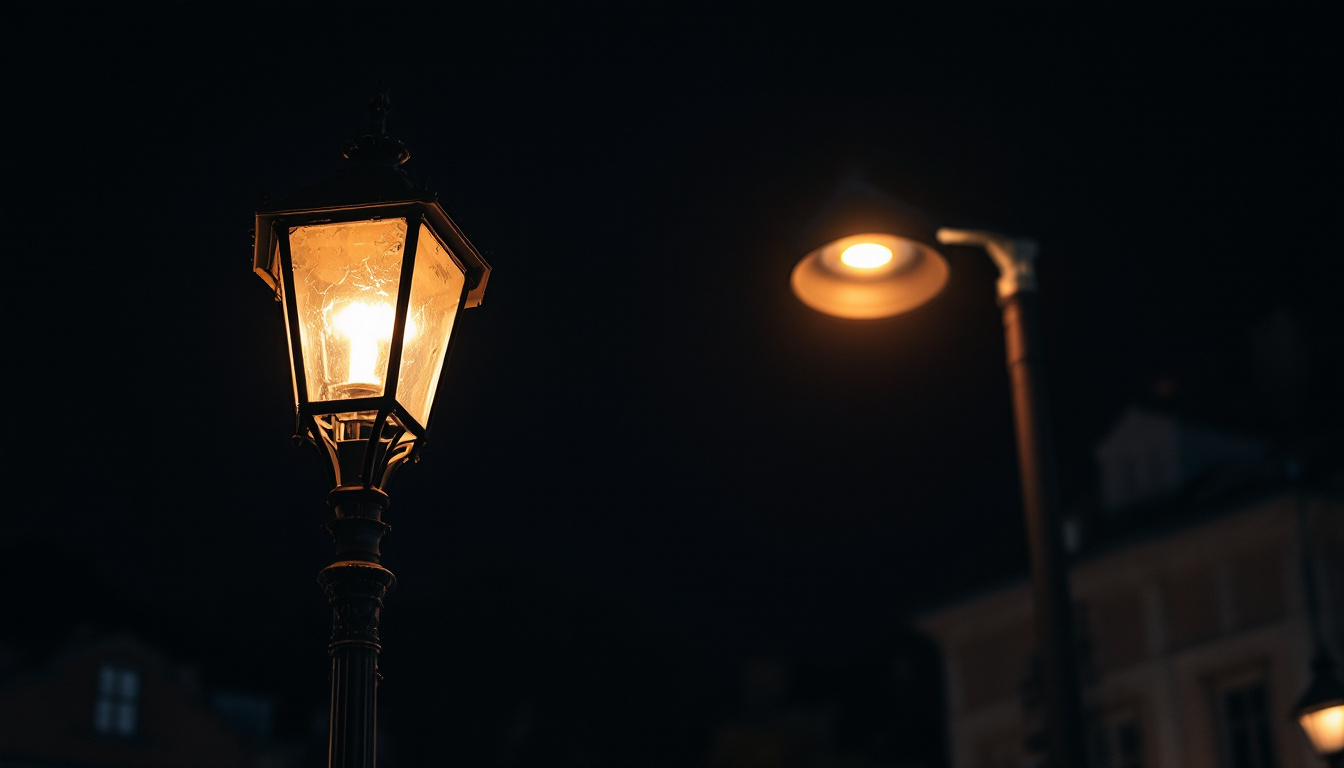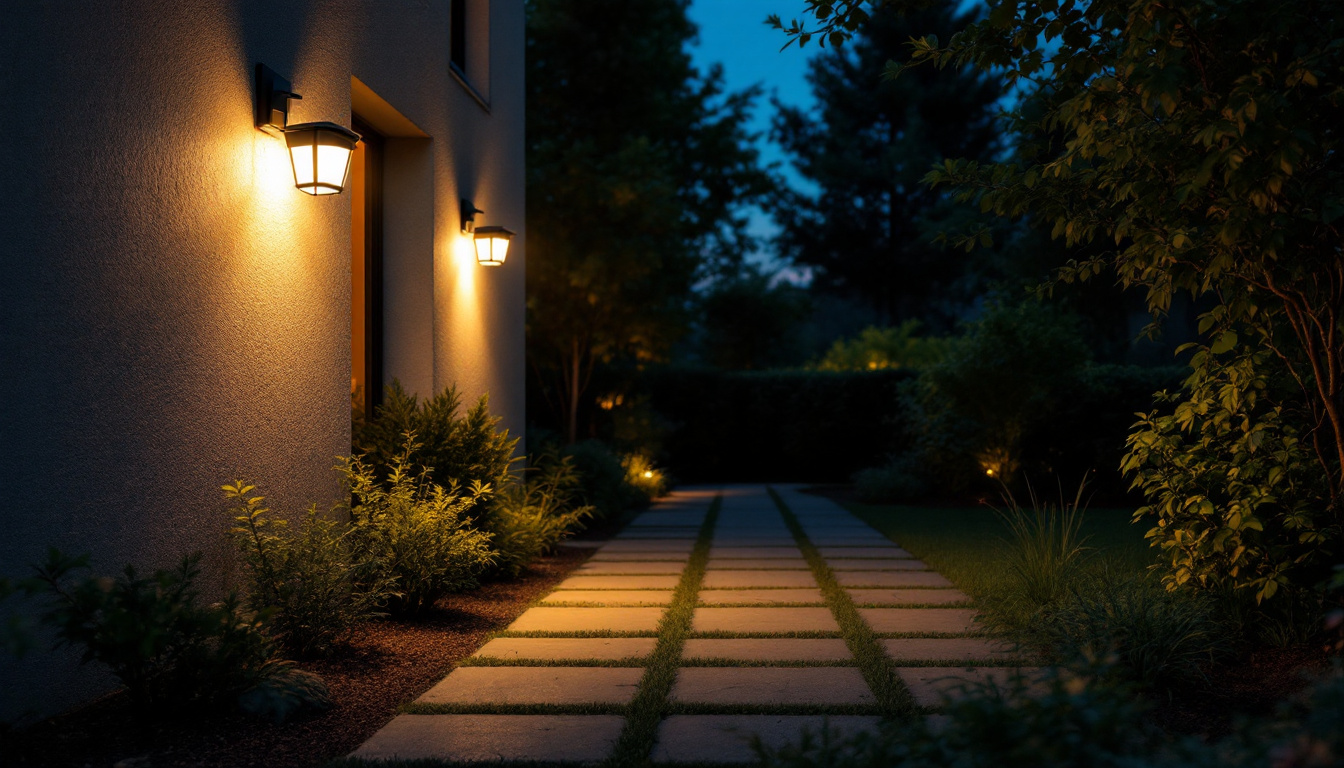
street lamp posts have long been a vital component of urban infrastructure, illuminating streets and enhancing safety for pedestrians and drivers alike. Over the years, these fixtures have undergone significant transformations, driven by technological advancements, changing aesthetic preferences, and evolving energy efficiency standards. This article delves into the evolution of street lamp posts, highlighting their historical significance, technological innovations, and future trends that lighting contractors should be aware of.
Street lamp posts have a rich history that dates back centuries. Initially, they served a practical purpose, providing light in darkened streets and public spaces. The earliest forms of street lighting were simple oil lamps, which required manual maintenance and frequent refueling. As urban areas expanded, the need for more efficient lighting solutions became apparent. The flickering flames of these early lamps not only illuminated the streets but also created a sense of ambiance, often becoming a focal point in town squares and gathering places.
The introduction of gas lighting marked a significant turning point in the evolution of street lamp posts. Gas lamps offered brighter illumination and required less frequent maintenance compared to their oil counterparts. Cities began to adopt gas lighting systems, leading to a proliferation of gas lamp posts in urban environments. This transition not only improved visibility but also contributed to the social and economic development of cities, as people felt safer venturing out after dark. Furthermore, gas lighting became a symbol of modernity and progress, with cities proudly showcasing their illuminated streets as a testament to their advancement and commitment to public safety.
As technology progressed, the electric light bulb emerged as a groundbreaking innovation. Electric street lamps quickly gained popularity due to their efficiency and reliability. Unlike gas lamps, electric lights could be easily controlled and automated, allowing for more consistent illumination throughout the night. The shift to electric lighting transformed urban landscapes, enabling cities to create well-lit public spaces that fostered community interaction and commerce. This new form of lighting also paved the way for artistic and architectural advancements, with designers incorporating elaborate lamp post designs that enhanced the aesthetic appeal of city streets. The introduction of electric lighting also coincided with the rise of nightlife, as theaters, restaurants, and shops began to stay open later, contributing to a vibrant urban culture that thrived after sunset.
With the advancement of technology, street lamp posts have evolved beyond mere sources of light. Modern designs incorporate a range of features that enhance functionality and aesthetics. For lighting contractors, understanding these innovations is crucial for staying competitive in the industry. The shift towards more integrated solutions not only improves urban landscapes but also contributes to the overall safety and efficiency of city environments.
One of the most significant advancements in street lighting has been the adoption of LED technology. LED street lamps are not only energy-efficient but also have a longer lifespan compared to traditional lighting options. This shift has resulted in substantial cost savings for municipalities and reduced environmental impact. The ability to adjust brightness levels and color temperatures further enhances the versatility of LED street lamps, making them suitable for various applications. Moreover, the directional nature of LED lighting minimizes light pollution, allowing for better visibility of the night sky and creating a more pleasant environment for residents and wildlife alike.
The integration of smart technology into street lamp posts has revolutionized urban lighting. Smart street lights can be equipped with sensors that monitor traffic patterns, weather conditions, and pedestrian activity. This data can be used to optimize lighting levels, improving safety and reducing energy consumption. Additionally, smart lighting systems can be remotely controlled, allowing for real-time adjustments and maintenance alerts, which streamline operations for lighting contractors. Beyond basic functionality, these systems can also connect to city-wide networks, enabling features such as emergency response integration and environmental monitoring, which can significantly enhance urban management and community safety.
Another noteworthy innovation in street lamp design is the incorporation of solar power. Solar-powered street lamps harness energy from the sun during the day, storing it in batteries for use at night. This sustainable approach not only reduces reliance on grid electricity but also lowers operational costs for municipalities. As solar technology continues to advance, these lamps are becoming more efficient and capable of providing reliable illumination even in less sunny regions. Furthermore, the installation of solar street lights can be particularly beneficial in remote or underserved areas where traditional electrical infrastructure may be lacking, promoting safety and accessibility in those communities.
In addition to functionality, the design and aesthetic appeal of street lamps have gained importance in urban planning. Modern street lamps come in various styles, materials, and finishes, allowing cities to choose designs that complement their architectural heritage and public spaces. From sleek, contemporary designs to more traditional lantern styles, the visual impact of street lighting can enhance the overall ambiance of a neighborhood. Cities are increasingly recognizing the role of lighting in creating inviting public spaces, which can foster community engagement and encourage nighttime activities, ultimately contributing to a vibrant urban life.
As cities continue to evolve, so do the design trends surrounding street lamp posts. Aesthetic considerations play a crucial role in urban planning, and lighting contractors must stay attuned to these trends to meet client expectations.
Modern street lamp posts are increasingly designed to complement the architectural style of their surroundings. This integration enhances the visual appeal of public spaces and contributes to a cohesive urban environment. Lighting contractors are often tasked with selecting fixtures that align with the overall design vision of a project, ensuring that street lamps harmonize with buildings, parks, and other elements of the landscape. The choice of materials, colors, and styles can evoke different moods and functionalities, making it essential for designers to understand the context in which these lamps will be placed. For instance, sleek, minimalist designs may be favored in contemporary urban areas, while ornate, vintage styles might be more appropriate in historic districts, creating a narrative that resonates with the community’s identity.
In response to growing environmental concerns, many manufacturers are now producing street lamp posts using sustainable materials. Recycled metals, biodegradable plastics, and other eco-friendly options are gaining traction in the industry. Lighting contractors should consider these materials not only for their environmental benefits but also for their potential to appeal to clients who prioritize sustainability in their projects. Additionally, the integration of energy-efficient LED technology into these designs is becoming increasingly common, further reducing energy consumption and maintenance costs. The combination of sustainable materials and innovative lighting solutions not only addresses ecological issues but also aligns with the broader movement towards smart city initiatives, where technology and sustainability work hand in hand to create more livable urban spaces.
Despite the advancements in street lamp post technology and design, the industry faces several challenges that lighting contractors must navigate. Understanding these challenges is essential for developing effective solutions and maintaining client satisfaction.
As cities invest in more advanced lighting systems, the complexity of maintenance increases. Smart street lights, for example, require specialized knowledge for troubleshooting and repairs. Lighting contractors must stay updated on the latest technologies and maintenance practices to ensure that they can provide effective support to their clients. Regular training and education in emerging technologies can help contractors remain competitive in this evolving landscape.
Many municipalities face budget constraints that limit their ability to upgrade or maintain street lighting systems. Lighting contractors may find themselves working within tight financial parameters, necessitating creative solutions that balance quality and cost. Offering energy-efficient options, such as LED fixtures, can help clients save money in the long run, making it easier to justify initial investments.
Looking ahead, the future of street lamp posts appears promising, with continued innovations on the horizon. Lighting contractors should be prepared to embrace these changes and adapt their strategies accordingly.
The push for sustainability is driving the integration of renewable energy sources into street lighting systems. Solar-powered street lamps are becoming increasingly popular, especially in areas where traditional grid connections are challenging. These systems not only reduce energy costs but also contribute to a greener urban environment. Lighting contractors should explore partnerships with renewable energy providers to offer clients comprehensive solutions that align with sustainability goals.
The future of street lamp posts may also involve enhanced connectivity, with fixtures serving as hubs for various technologies. From Wi-Fi hotspots to charging stations for electric vehicles, street lamps could become multifunctional assets that cater to the needs of modern urban life. Lighting contractors should consider the potential for integrating these features into their designs, providing clients with innovative solutions that enhance the utility of public spaces.
The evolution of street lamp posts reflects broader trends in the lighting industry, driven by technological advancements, design innovations, and changing societal needs. For lighting contractors, staying informed about these developments is crucial for success in a competitive market. By embracing new technologies, understanding design trends, and addressing industry challenges, contractors can continue to play a vital role in shaping the future of urban lighting.
As cities continue to grow and evolve, the importance of effective street lighting will only increase. Lighting contractors are positioned at the forefront of this evolution, tasked with delivering solutions that not only illuminate but also enhance the urban experience. The journey of street lamp posts is far from over, and the opportunities for innovation and improvement are limitless.
As the lighting industry continues to innovate, LumenWholesale is here to ensure that lighting contractors have access to the best in street lamp post technology and design. Embrace the future of urban lighting with our spec-grade lighting products that promise quality and affordability. With LumenWholesale, you can confidently meet the evolving demands of your projects, backed by our commitment to unbeatable wholesale prices, free shipping, and hassle-free bulk buying. Elevate your lighting solutions and enhance the urban experience with Wholesale Lighting at the Best Value today.

Explore the transformative journey of the lighting industry with the advent of the Light Switchboard.

Discover innovative cost-saving strategies for lighting contractors in “Solar Light Night.” Explore how solar technology can transform nighttime illumination projects, reduce expenses, and enhance sustainability..

Discover the insider tips and expert techniques lighting contractors use to master can light fixtures.

Illuminate your expertise with our comprehensive checklist for solar security lighting.